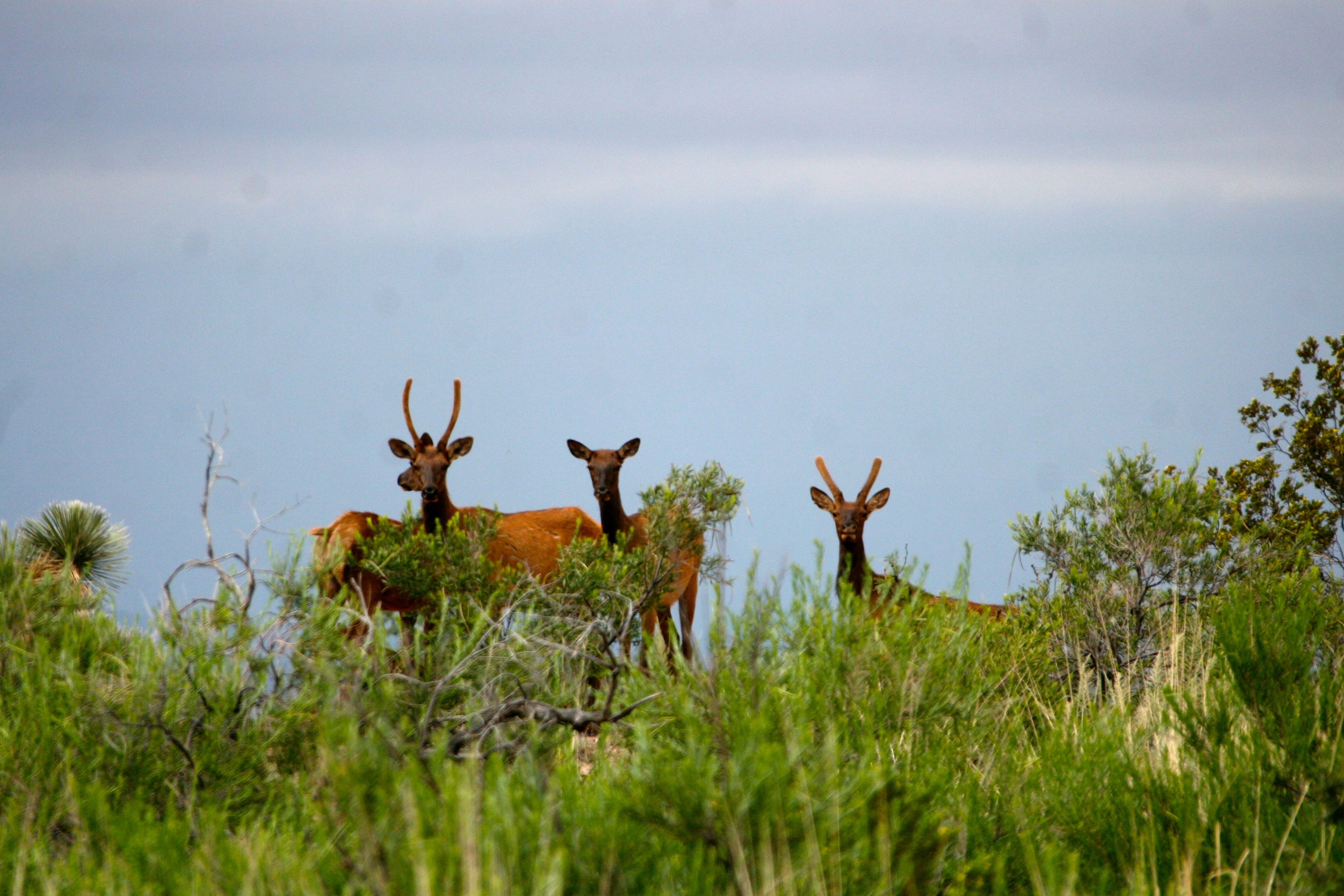Texas Elk and the North American Wildlife Conservation Model

For 150-years American conservationists have followed the the North American Wildlife Conservation Model. It has been beneficial for waterfowl and iconic big game species across the continent with the exception of elk in far-West Texas. Here on state-managed lands Texas Parks and Wildlife Department (TPWD) bighorn sheep managers kill all elk in the scientifically unsupported belief that elk are an “exotic”, “invasive” species which harm Desert Bighorn Sheep and their habitat.
TPWD’s elk removals are not mandated by law: They are conducted without notice or public comment pursuant to TPWD’s own internal policies. They block the recovery of a wide ranging species that is native to far-West Texas, New Mexico and Northern Mexico. They deny Texas’ elk enthusiasts and hunters the chance to see and hunt trophy elk in Texas. Local communities and landowners lose the jobs, income and taxes these activities would create.
These actions and the methods by which they are accomplished break Tenets 1, 3, 4, 5, 6, & 7 of the model, which Texas and TPWD are pledged to follow. The model is outlined below.

The North American Wildlife Conservation Model
The North American Wildlife Conservation Model has no direct legal powers, but rather has become the basis for policies developed by the Boone and Crockett Club, the Association of Fish and Wildlife Agencies, The Wildlife Society, and other conservation groups. The model has been widely accepted by wildlife professionals, incorporated into U.S. state agencies, and endorsed by professional organizations and teaching institutions.
Tenets
The core principles of the Model are elaborated upon in its seven major Tenets :
- Wildlife as Public Trust Resources
- Elimination of Markets for Game
- Allocation of Wildlife by Law
- Wildlife Should Only be Killed for a Legitimate Purpose
- Wildlife is Considered an International Resource
- Science is the Proper Tool for Discharge of Wildlife Policy
- Democracy of Hunting
1. Wildlife as Public Trust Resources
In the North American Model, wildlife is held in the public trust. This means that fish and wildlife are held by the public through state and federal governments. In other words, though an individual may own the land up which wildlife resides, that individual does not own said wildlife. Instead, the wildlife is owned by all citizens. With origins in Roman times and English Common law, the public trust doctrine has at its heart the 1842 Supreme Court ruling Martin V. Waddell.
2. Elimination of Markets for Game
Commercial hunting and the sale of wildlife is prohibited to ensure the sustainability of wildlife population. This principle holds that unregulated economic markets for game and nongame wildlife are unacceptable because they privatize a common resource and lead to declines. The Lacey Act of 1900 effectively made market hunting illegal in the United States, and the Migratory Bird Treaty Act of 1918 provided international protections from the market.
3. Allocation of Wildlife by Law
Wildlife is allocated to the public by law, as opposed to market principles, land ownership, or other status. Democratic processes and public input into law-making help ensure access is equitable. Laws regulating access to wildlife include the 1940 Bald and Golden Eagle Protection Act, Endangered Species Preservation Act and Fur Seal Act of 1966, the Marine Mammal Protection Act of 1972, and the 1973 Endangered Species Act.
4. Wildlife Should Only be Killed for a Legitimate Purpose
Under the North American Model, the killing of game must be done only for food, fur, self-defense, and the protection of property (including livestock). In other words, it is broadly regarded as unlawful and unethical to kill fish or wildlife (even with a license) without making all reasonable effort to retrieve and make reasonable use of the resource.
5. Wildlife is Considered an International Resource
As wildlife do not exist only within fixed political boundaries, effective management of these resources must be done internationally, through treaties and the cooperation of management agencies.
6. Science is the Proper Tool for Discharge of Wildlife Policy
The North American Model recognizes science as a basis for informed management and decision-making processes. This tenet draws from the writings of Aldo Leopold, who in the 1930s called for a wildlife conservation movement facilitated by trained wildlife biologists that made decisions based on facts, professional experience, and commitment to shared underlying principles, rather than strictly interests of hunting, stocking, or culling of predators. Science in wildlife policy includes studies of population dynamics, behavior, habitat, adaptive management, and national surveys of hunting and fishing.
7. Democracy of Hunting
This tenet is inspired by Theodore Roosevelt’s idea that open access to hunting would result in many benefits to society. The right to hunt in the United States and Canada by citizens of good standing is in contrast to nations where hunting is restricted to people with wealth, land ownership, or other special privileges. This tenet supports access to firearms and the hunting industry, of which much funding for conservation is derived.
